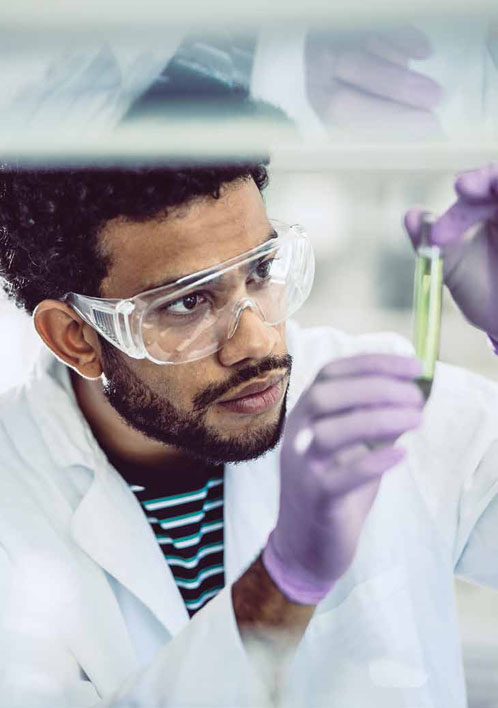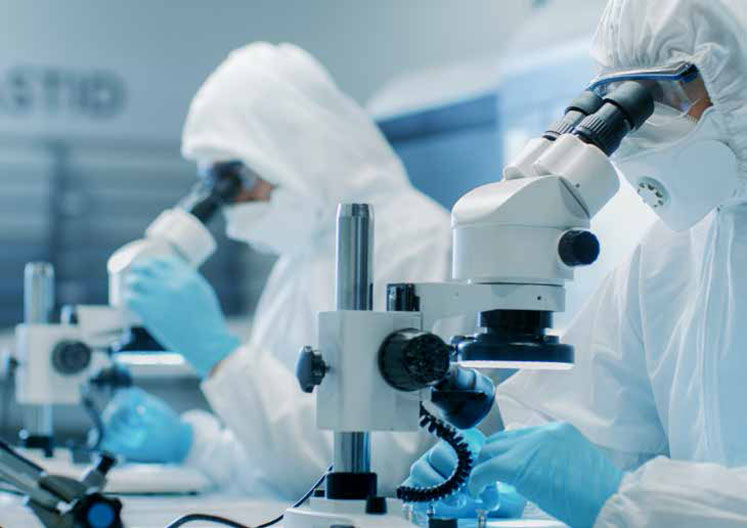With the cost of drug development rising and fewer blockbuster drugs (peak sales exceeding £1 billion) reaching the market, high levels of competition in existing markets and more stringent criteria for drug approvals mean that pharmaceutical profits are under pressure.1,2
Pharmaceutical companies are therefore turning to the promise of personalised medicines as they not only offer a potentially lucrative new field, but also the promise of better treatments.
This new medical paradigm uses advances in genetics and bioinformatics to design custom drugs for the patients who will benefit the most.
Personalised medicines are tailored to specific genetic profiles, requiring a detailed understanding of the links between certain genes and diseases.
This is made possible by the creation of extensive genome databases, such as the Human Genome Project, which have allowed researchers to map genetic profiles and create more targeted treatments.
Those with genetic dispositions and those suffering from orphan diseases are most likely to reap the benefits of this precision approach; but, wider groups will also feel the impact of these new technologies.
As we’ve seen during the COVID-19 pandemic, the mRNA technology originally developed for oncology was rapidly applied to the creation of safe and effective vaccines.

Sade Mokuolu
The challenges of a new approach
The growth of personalised medicine is creating new challenges for pharmaceutical companies — both during the R&D and manufacturing phases. This paradigm shift from bulk to specific (small-scale) treatments is putting a strain on the technologies used at all stages of the process.
Companies are under pressure to get to market quickly in a competitive sector and are facing lower returns on investment owing to smaller patient populations.
This can be outweighed by higher prices … but there are limitations on what patients and healthcare providers can pay, taking into consideration disease management costs, drug prices and outcome success rates.
Although governments and healthcare systems put pressure on pharmaceutical companies to deliver highly effective medicines at lower costs, companies need to reclaim the high development expenses associated with long development timelines and high attrition rates.
Fast-track regulatory approvals are therefore being sought by drug developers who are keen to gain an early market lead.3 Regulatory agencies have demonstrated that these fast-track approvals are possible during the pandemic, and if these corridors can be maintained, such accelerated approvals will have an important impact on personalised medicines.

Steve Adams
The pressure to expedite development timelines and minimise costs for a new class of medicines is translated into novel challenges for the bioprocessing industry.
It has had to find ways to efficiently deliver high-value medicines, often sensitive biologics, at much smaller scales than traditional broad-spectrum drugs. Once again, the pandemic has shown that manufacturing medicines at risk, in parallel to development and approval, can significantly accelerate timelines and could transform the drug development process going forward.
The flexibility shift
Whereas the small molecule blockbuster drugs used to treat common diseases were often produced in high volumes, personalised medicines use smaller batches — leading to much higher costs per batch.
Cell therapies such as Yescarta by Kite Pharma and Novartis’ Kymriah, for example, cost $373,000 and $475,000, respectively.4 Each batch of these therapies requires extensive processing and treats a single patient.
These costs mean that biomanufacturers increasingly need to design facilities that protect product integrity, sterility and prevent any cross-contamination.
Flexible equipment provides a perfect solution to these problems: equipment arrives presterilised and validated, reducing the risk of contamination. The components can be disposed of between batches, saving time and providing further cross-contamination control.
Some of the advanced autologous therapies currently available use small, specialised clinics to process and deliver the treatments, meaning that smaller-scale equipment is key. Unlike large stainless-steel devices, flexible systems require a lower initial capital investment, speeding up deployment and time to market.
Scaling down and out
Personalised medicines need smaller systems than in the past. A typical stainless-steel bioreactor, for example, might have a volume of 30,000 L, whereas a single-use bioreactor for a targeted biologic is more likely to be in the 2000–5000 L range.
As companies developing personalised medicines try to reach the market as quickly as possible, transitioning from smaller to larger-scale equipment is declining in popularity owing to problems with equipment configuration and process validation. Organisations are therefore “scaling out” to increase production capability with multiple identical systems.

In addition, biomanufacturers are seeking flexible machines that allow rapid changeover times and customisation between batches. Peristaltic technology lends itself to this purpose as the pump mechanism never comes into contact with the medicinal product.
Only the inner bore of the presterilised tubing does, ensuring sterility, preventing cross-contamination and enabling the same pump to be used for multiple batches. These high-value medicines are also often delicate; as such, a gentle pumping action is key to protect product integrity and maintain efficacy.
The final hurdle
Fill-finish technology is another example wherein bioprocessing technology is rapidly advancing to meet these changing needs. Many biomanufacturers are turning to fully or semiautomated systems, specifically designed for smaller batches of up to 5000 units, to remove human error and any associated contamination from their processes.
Although it may seem as though fully robotic systems are best, semiautomated hybrid systems are another option that are gaining in popularity; they limit interventions when product sterility is at most risk, but allow for controlled and qualified human interventions to fix small issues without compromising an entire batch.
These fill-finish machines deliver the levels of automation required to accelerate production and protect product quality and sterility, all without the need for large production facilities.
Importantly, these machines are specifically designed for this process, meaning that standardised set-ups can be delivered quickly, helping companies to meet fast turnaround times and accelerated approval processes.
This automation also facilitates regulatory compliance. In the EU, Annex 1 is the newest set of GMP regulatory guidelines designed to minimise the risk of contamination with a guidance framework that has been developed in line with advancing technology.
Barrier technologies are essential to both prevent product contamination and protect machine operators from exposure to potentially toxic reagents.
This updated regulation is guiding manufacturers towards turnkey solutions that ensure the integration of barrier technologies, fill-finish machinery and environmental monitoring, transferring the risk to equipment manufacturers who will need to provide proof of validation.

Collaboration is key
As we’ve seen during the pandemic, innovations in medicine do not come from individuals but rely on cross-industry, multinational collaborations to get lifesaving medicines to patients as quickly as possible.
This is also the case for personalised medicines, whereby pharma and biotech organisations must work closely with bioprocessing experts to design and optimise systems, thereby providing the high-quality equipment these therapies depend on.
In traditional biomanufacturing, pharmaceutical companies had complete control of their production processes. Today, with the rise of flexible, single-use equipment, the trend is towards a partnership between suppliers and customers.
Suppliers must meet customer expectations for a guaranteed supply of components. They must prove that their customers can use their systems to manufacture drugs for the foreseeable future and put procedures in place to minimise the risk of supply disruption.
Customers and suppliers are also working together to provide high-quality data about the safety of technical plastics. They are collaborating on best practices in supply chains and standardising customer requirements across the industry to ensure patient safety and guaranteed drug supplies.
Personalised medicine is poised to transform the pharmaceutical sector. During the next few years, the industry must come together to further advance biomanufacturing approaches and solve emerging problems to deliver these life-changing therapies to patients as quickly as possible.
References
- www.genengnews.com/insights/the-blockbuster-is-dead-long-live-the-blockbuster/.
- https://endpts.com/pharmas-broken-business-model-an-industry-on-the-brink-of-terminal-decline/.
- www.raps.org/news-and-articles/news-articles/2018/5/global-opportunities-and-requirements-for-expedite.
- https://xconomy.com/national/2019/01/03/for-car-t-cancer-fighters-in-the-real-world-two-roads-diverge/.




